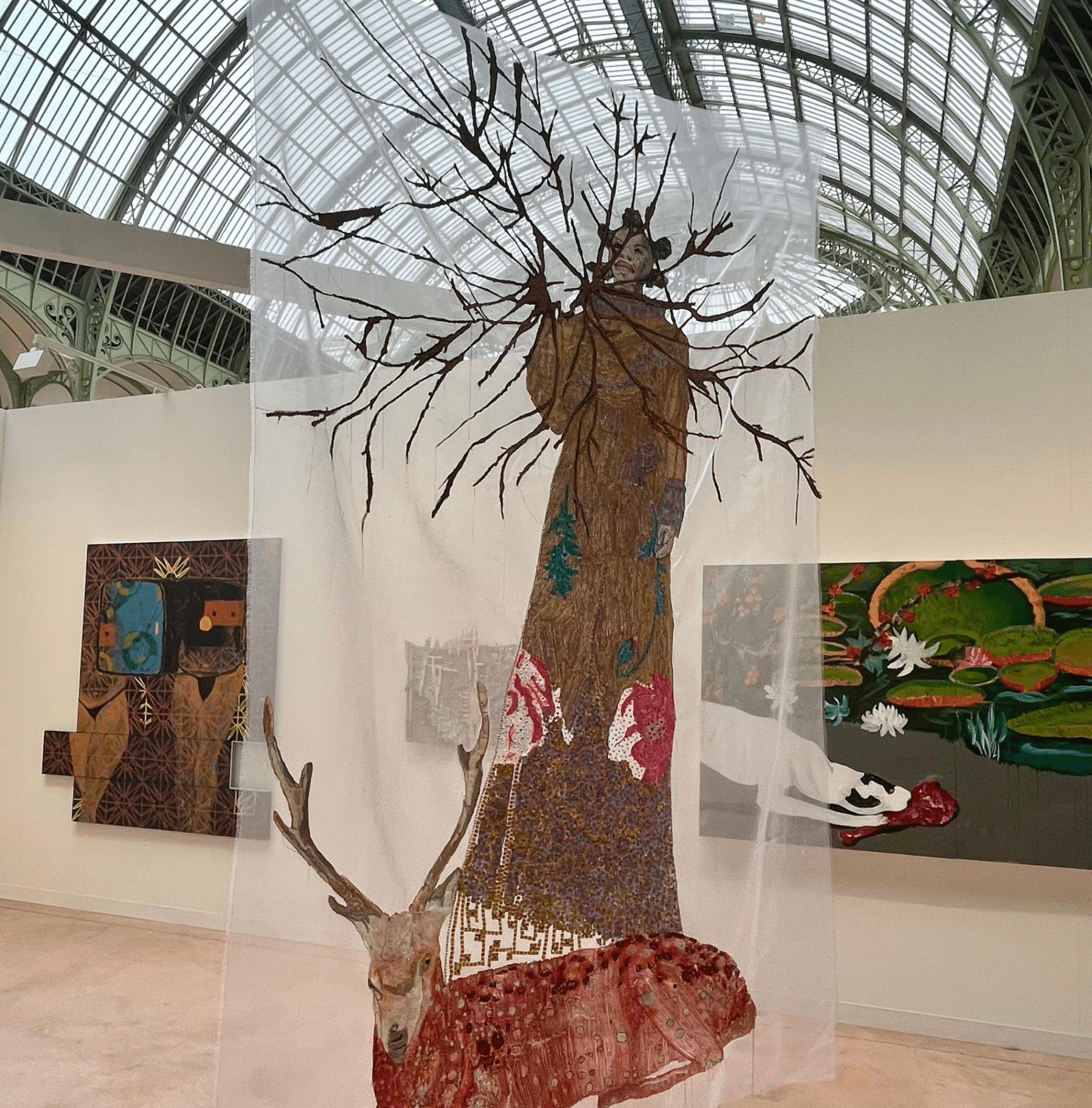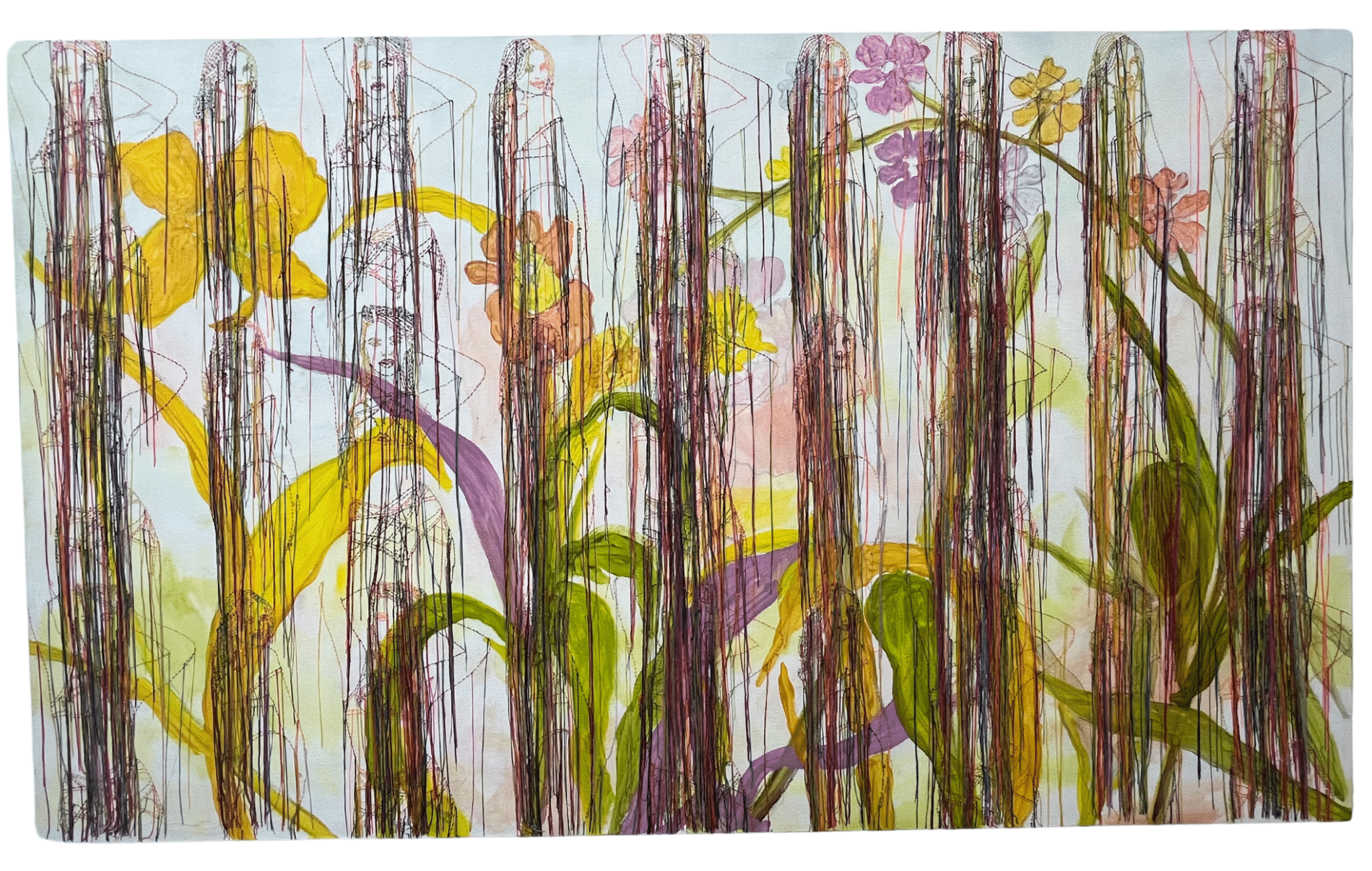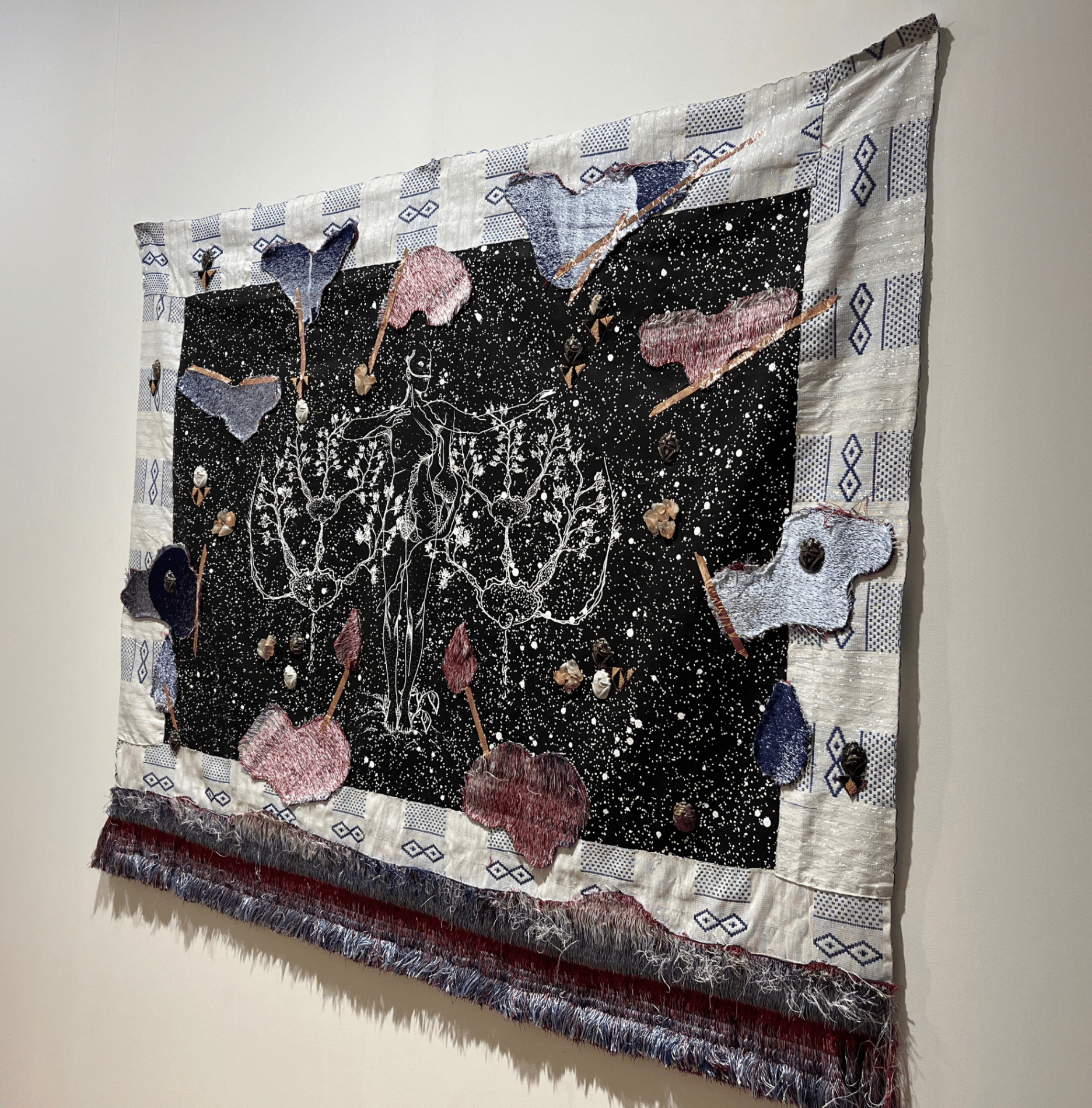Contemporary embroidery at Paris Art Basel 2024
Long considered a traditional craft rather than a plastic medium, embroidery was excluded from the realm of fine art for centuries. The practice was also seen as exclusively feminine, the result of an apprenticeship deemed necessary for every young woman dedicated to the well-being of her household. In the early 20th century, artists began to take an interest in textiles as an artistic medium in its own right. In 1919, a sewing workshop was set up at the Bauhaus School, with the participation of German artists Gunta Stölzl and Anni Albers.
The "fiber art" movement took off in the 60s, thanks in particular to the work of American Lenore Tawney, who created sculptures in linen threads. Sheila Hicks, a key figure in this movement, fused sculpture and weaving. Her stock exploded in 2017 following her exhibition at the Venice Biennale, with works selling for between $40,000 and $500,000 at Alison Jacques in London.[i]
Embroidery would have gained visibility ten years earlier, following an exhibition at New York's Museum of Arts & Design in 2008 entitled Pricked: extreme embroidery. In the same year, the presence of embroidered works by Corinne Marchetti and Francisco Vezzoli at major contemporary art fairs such as the Armory Show and Volta consolidated textile art's place on the international art scene.[ii]
In 2024, it's the committed, sometimes provocative side of embroidery that comes to the fore. Through a long, tedious and sometimes even painful process, the gesture becomes a performance. Artists weave and embroider around political subjects: the technique, intrinsically linked to femininity, highlights scars and reconnects with memories that bear identity claims. The interest in gender studies and the spotlight on women artists over the last five years is also linked to the strong presence of this medium at the show. While some embroidered works invite us into a more dreamlike imaginary world, using brightly-colored threads and the softness of textiles to evoke childhood, most deal with urgent issues such as migration, deforestation, and relations of domination towards women or racialized people.
It's worth noting the notable presence of international artists adopting this technique. These come from North America (Hunter Reynolds, Bisa Butler), South America (Teresa Margolles, Nohemí Pérez) and Africa (Ghada Amer, Marie-Claire Messouma Manlanbien). African textile creations, steeped in ancestral traditions and know-how, bring a unique cultural dimension to the embroidered works. This geographical diversity reflects the unique cultural perspectives that can be conveyed through embroidery, which establishes a genuine bridge between craftsmanship and the fine arts. This attracts an international clientele.
Prices for the embroidered works on display range from €5,000 for the smallest formats to $180,000 for historic pieces, or those made from precious materials such as copper and gold. The average asking price is around €45,000 for a large piece. The key factors in setting the price are, of course, the artist's reputation, but also the technical complexity and size of the work.
The interplay of materials and reliefs captures the attention and offers a unique sensory experience. This tactile and visual dimension contributes to the growing popularity of tapestries and other forms of textile art on the contemporary art market in recent years. A return to tradition and an interest in the technicality and dexterity of the gesture seem to have become central. Embroidery, with its slow process, runs counter to the habits of an over-consuming society, and arouses a real fascination among collectors.
Julie Merle, October 24, 2024.
[i] Myriam Boutoulle, "La vogue de l'art textile contemporain", Connaissance des Arts with Les Echos, Hors-Série n°1096, October 16, 2024.
[ii] Frédérique Joseph-Lowery, "Broderie et art contemporain", art press, n°352, January 2009.


